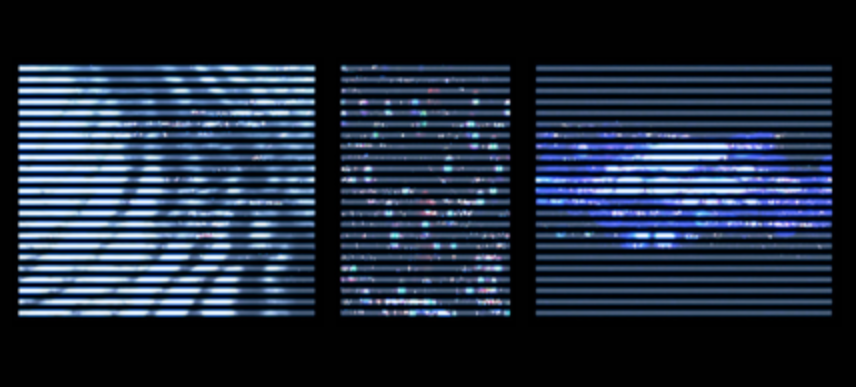
One of the great advantages of living over the Museum of Modern Art (MoMA) is that we can go visit any time.
As residents, we also get these nifty passes that let you bypass the lines that often snake all the way around the block.
As a videograper, however, I have to say that I am perpetually disappointed in what passes for 'video art'. (With the possible exception of Bill Viola). Most of it is just terrible.
Now, I am no art critic, and I am sure I going to catch hell from the legions of professional art critics who will quickly see that I have absolutely no taste, but honestly, most of what passes for video fine art (if that is not an oxymoron), just astonishes me. It is as though the artist just discovered a video camera and believes that pointing it at something, (like waves crashing on the beach, for example) and filming for an hour or so, and then projecting that onto a wall constitutes art... well, you get my pedestrian point of view.
Photography went through an interesting transition from representative craft to art in the late 1950s. Prior to that, there were no photographs that were considered fine art. Photography was a craft, and a highly technical one.
Then, beginning in the 1930s, and driven more than anything else, by the invention of the small, hand-held Leica (and 35mm roll film by Agfa), photography underwent an enormous transition.
The small cameras allowed a kind of intimacy of work that big view cameras could not allow. The 35mm film allowed multiple exposures which single cut sheet film did not allow.
The culmination of all of this was the Family of Man Exhbition at MoMA (right downstairs), curated by Edward Steichen in 1955. There, for the first time, photojournalism was elevated to high art.
It was a seminal moment for photography, and photography has never been the same since.
An article in The Guardian today, "Could Instagram Start An Artistic Revolution?" got me thinking about video.
The piece said, in essence, that now billions of people (quite literally) are posting billions of images to Instagram. Why not an art form in itself.
I suppose this is more along the lines of an infinte number of monkeys and an infinte number of typewriters and one of them has to write King Lear.
But to me, the piece is almost superflous. Photography long ago crossed the barrier from representational craft to fine art. But video... that's another story.
Until say, yesterday, most video cameras were in the hands of camermen who while quite good at lighting and so on spent most of their careers pointing it where they were told, which, more often than not, was either a blathering interview subject or a buidling on fire.
But what happens when you put a video camera into the hands of a painter, a writer, an artist?
I have no idea.
But now that video cameras are as common as, say, smart phones (3.5 billion at last count) I think we are about to find out.



